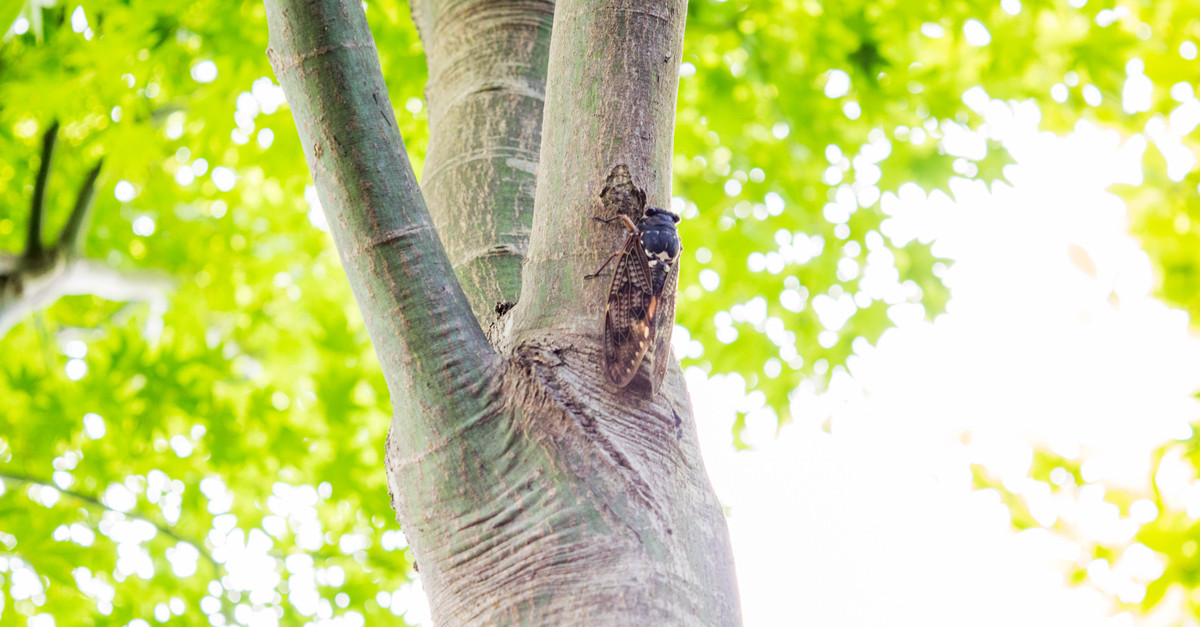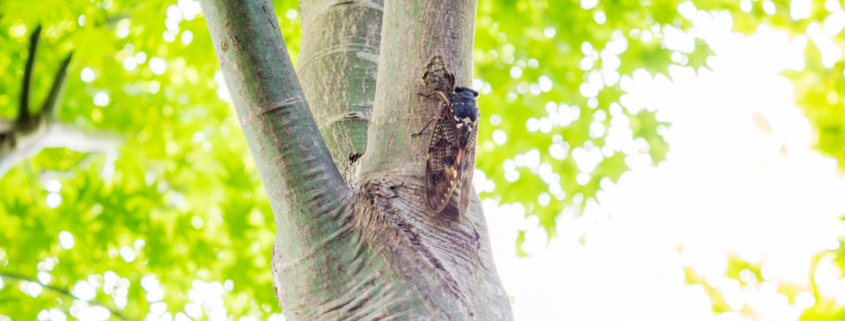Do Cicadas Damage Trees?
Cicadas have long been synonymous with early summer. Once soil temperatures reach 64 degrees, these unique insects emerge from their underground slumber, marking their arrival with their telltale mating sounds. And while cicada swarms can indeed be piercing, they’re short-lived: just several weeks later, the insects die, leaving a mess of shells in their wake.
This year marks a special occasion for cicadas: both Brood XIX, which emerges every 13 years, and Brood XIII, which appear every 17 years, will come out together. It’s the first time since 1803 that these specific broods will co-emerge — so what can we expect from such a significant event?
Is There Potential for Cicada Tree Damage?
While they can certainly be a nuisance in other ways, cicadas are unlikely to cause any lasting damage to your trees. Aside from the boisterous buzzing, the main headache they’ll bring is a flurry of carcasses. After emergence, these hibernating insects take to the trees to lay eggs in late spring or early summer, but most established plants can withstand the added weight. Minor physical damage known as “flagging” may occur in small or weak branches, which can interfere with water delivery to the tips of the affected branches. In most cases, though, this is only a concern for newly planted trees and shrubs.
The good news is that the overlap of these two emerging broods is unlikely to cause much of a stir here in Georgia. You’ll probably only notice the same signs of cicadas you do each year, as the biggest overlap of the two broods will mostly be concentrated in the Midwest. (Sending our best to central Illinois!)
How to Protect Vulnerable Plants from Cicada Damage
Although cicada tree damage isn’t a concern for established plants, you may want to treat your fresh plants with some TLC before cicada season. Fertilizing your soil and watering young plants are smart, proactive ways to promote resilience, regardless of impending cicada visits. And, to make sure saplings get all the nutrients they need, spread a three-inch layer of mulch around their base. This will keep pesky weeds out and lock moisture into the soil.
What To Do with Cicada Shells on Trees
Like any dead insects on your property, you could simply leave cicada shells on trees if they aren’t bothering you. But many people find their pungent odor to be off-putting, and their visible presence isn’t exactly a comforting sight, either.
If scattered cicada carcasses aren’t in line with your landscape vision for this season, you could collect and discard them once you notice an accumulation. But for a better, more sustainable approach, consider using their shells to nourish your garden. Their exoskeletons are rich in potassium and nitrogen – nutrients that can give your soil a healthy boost. Mix them into your compost bin, and throw in some newspaper or sawdust to cut the odor.
Schedule Your Service With Premier Tree Solutions
Keep your trees healthy long after cicada season with our professional tree care services. From pruning to stump removal, we can help keep your property attractive and safe year-round. Request an appointment with our specialists by sending us a message online or by calling (404) 252-6448.










